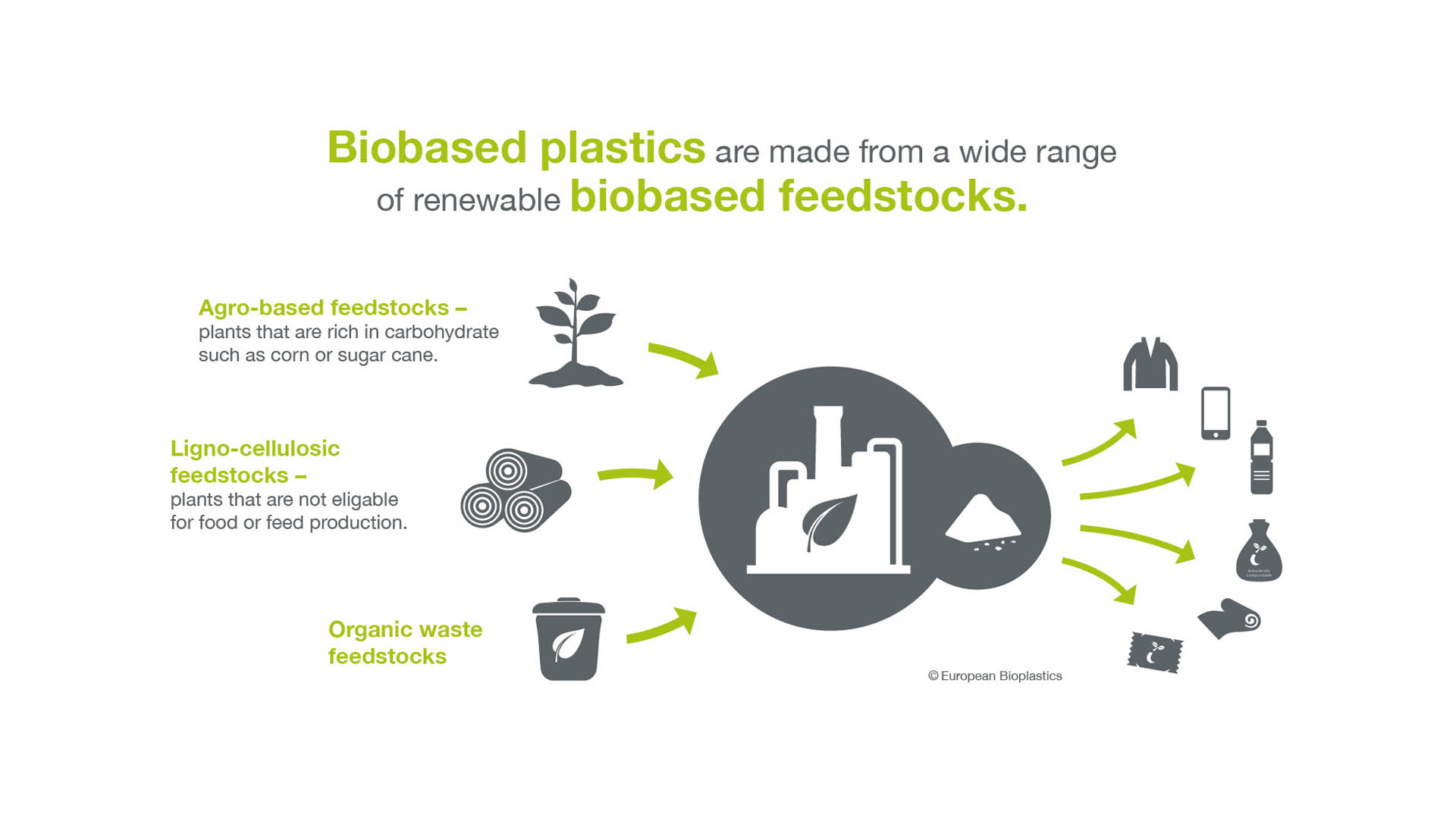Today, bioplastics are mostly made of carbohydrate-rich plants such as corn, sugar cane or sugar beet – so-called food crops or first generation feedstock. First generation feedstock is currently the most efficient for the production of bioplastics, as it requires the least amount of land to grow and produces the highest yields.
The bioplastics industry is also researching the use of non-food crops (second and third generation feedstock), such as cellulose, with a view to its further use for the production of bioplastics materials. Innovative technologies are focussing on non-edible by-products of the production of food crops, which generates large amounts of cellulosic by-products such as straw, corn stover or bagasse that can be used to produce biopolymers.
